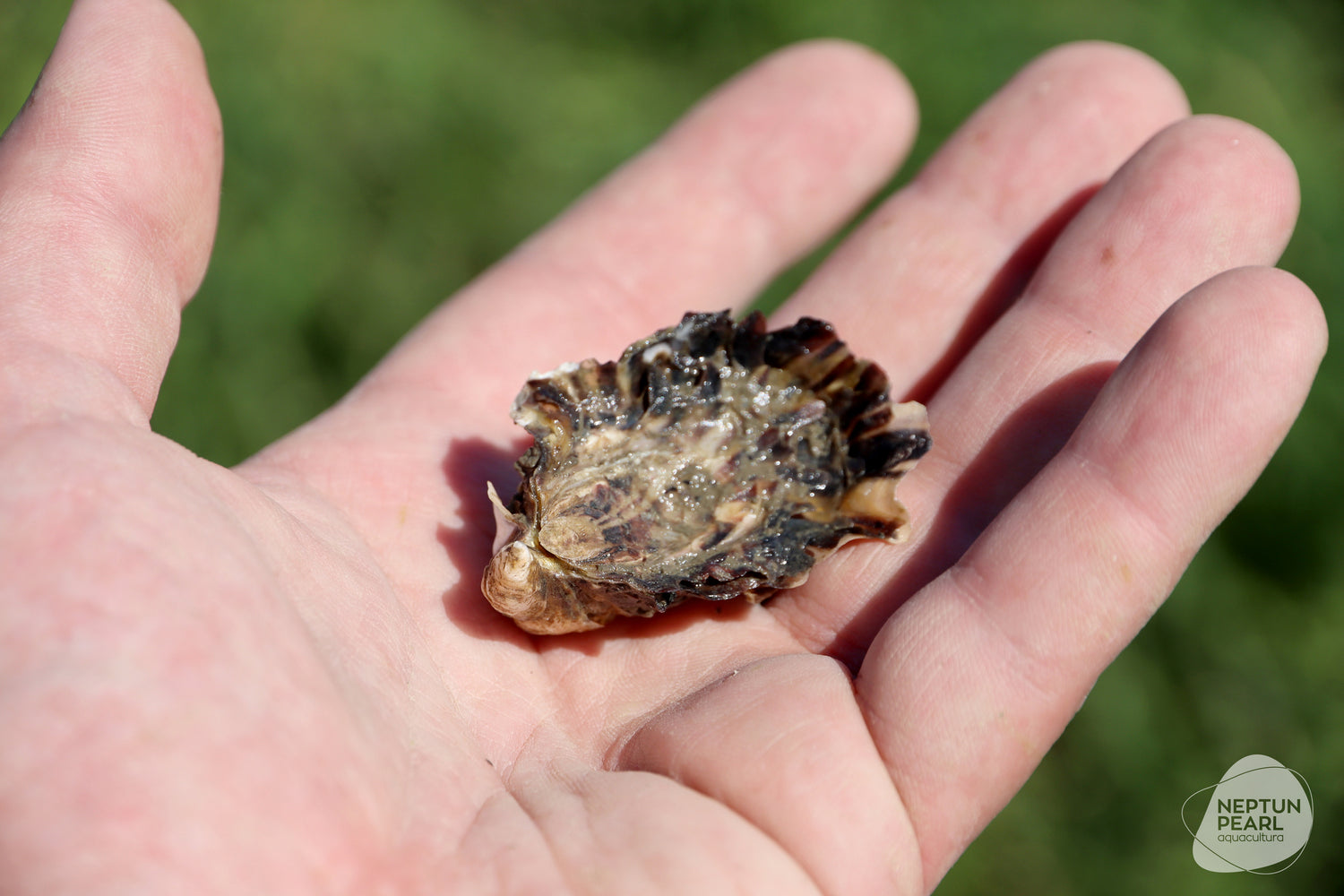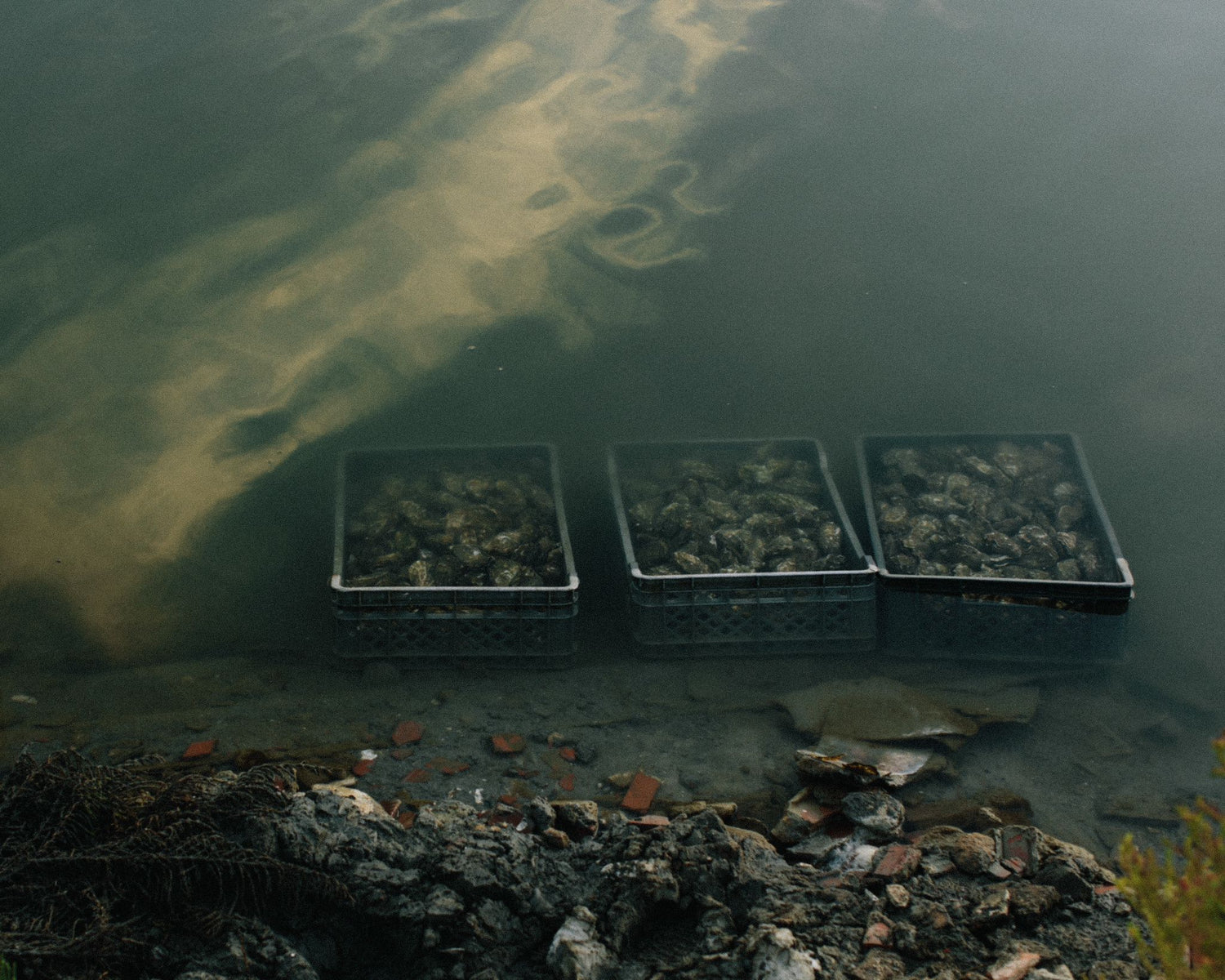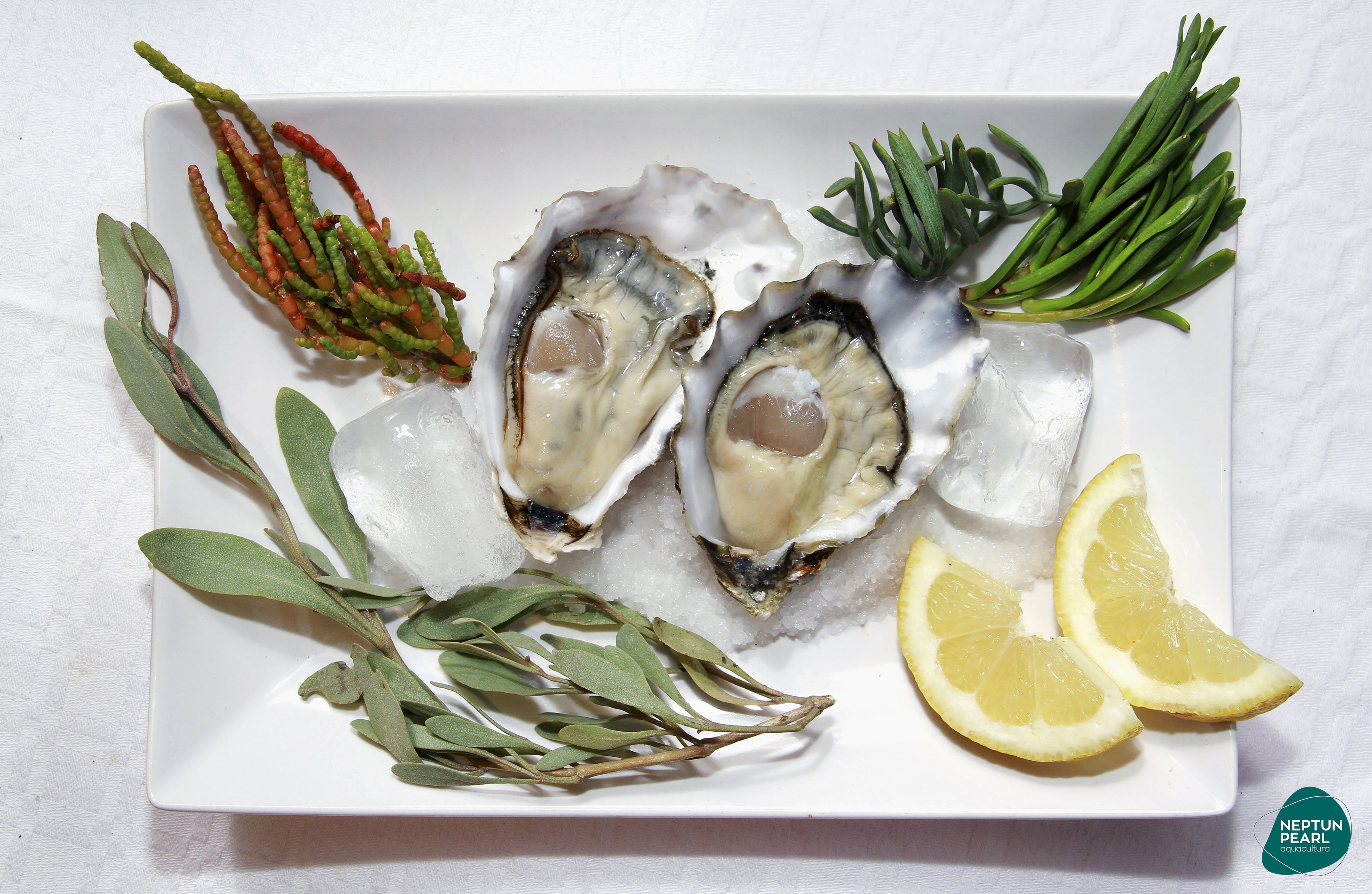Production
We use two production methods: a conventional one in which bags of oysters are placed on top of iron tables situated between the low and high tide water marks, and a second one in which oysters grow in large (>1 hectare) earthen tanks where we use floodgates to control the flow of water, simulating tides.

Seeds
We receive triploid oyster "seeds" measuring 4 to 6 mm wide and weighing 150 mg. We place the seeds in fine mesh bags with floats that keep them on the sunlit surface of the water amidst the nutrient-rich phytoplankton they need to grow.
We regularly clean and shake their bags to ensure they continue to get the nutrients and space they need to thrive.

Growth
As they grow, we divide them into new bags with larger mesh and fewer oysters per bag.
When they reach 30-45 grams, we move some of them to the pond bottom to grow, simulating their natural environment in an adaptation of the French practice of "fine de claire."
We keep our bottom densities low - at 4 to 10 oysters per square meter - so each oyster has ample access to the nutrients it needs to grow. This results in "super special de claire" oysters with a condition index (meat %) 20% or more.

Harvest
As our oysters reach market size (66 -85 grams for No. 3), we harvest some by hand, bringing them to our weighing station to test them for quality and sort them by size.
Others remain in the tank, where they continue to grow so that we can offer our customers a greater variety of calibers. Some of our oysters are over 6 years old and weigh almost 1 kg by the time of harvest!
After harvest, we purify oysters for at least 48 hours with UV- and charcoal-treated water to reduce potentially harmful contaminants before packaging them for distribution to some of Portugal's best restaurants.

